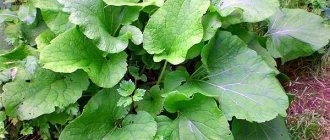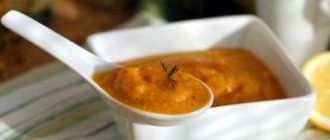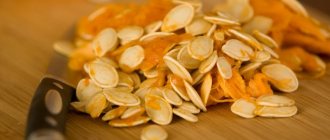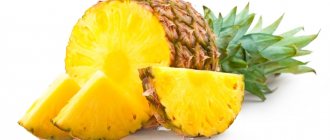Ananascomosus is the botanical name of the fruit known as pineapple. It is native to South America and was named for its resemblance to a pine cone. Christopher Columbus is credited with bringing attention to the fruit when he found it on the island of Guadeloupe in 1493. However, many studies suggest that pineapple was originally grown in Africa, and from there it spread to the Caribbean islands.
Today, Hawaii produces only 10 percent of the world's pineapple crop. Other countries contributing to pineapple production are Mexico, Honduras, Dominican Republic, Philippines, Thailand, Costa Rica and China.
The pineapple plant is low-growing with spiny leaves protruding from the ground. The leaves have the same shape as the greenery at the top of the fruit, which grows on the central stem.
To regulate the productive period, these fruits must be renewed every two harvest cycles and thus avoid yield reduction. This fruit is harvested after it is fully ripe, because after cutting, ripening stops and its taste begins to deteriorate.
Pineapple reduces intestinal inflammation and helps solve many problems with diseases of the digestive system. In addition, it promotes weight loss due to its low calorie content and high levels of antioxidants. This fruit, in addition to being delicious, is rich in fiber, vitamins and minerals, and is mainly composed of water.
Pineapple is useful at any time of the day. This fruit is a staple in a balanced diet and there is no excuse to skip it. It is necessary to eat several pieces of fruit a day, regardless of the time of day, since our digestive system with the corresponding gastric juices and enzymes is ready to digest them at any time.
The benefits of this tropical fruit are endless. But its main characteristic is its diuretic effect. Almost 90% of pineapple is water, which makes it a good ally in weight loss diets.
Interesting information about the fruit
Pineapple is a tropical fruit that is amazing in both form and content. His homeland is Brazil. Thanks to Christopher Columbus, the whole world learned about this fruit. Today it is grown all over the world. The main exporter is Hawaii. By the way, this fruit is the main one on the New Year's table in China.
At its core, pineapple is a herbal plant; it is grown in fields. And not on palm trees, as many people think! The plant can reach 1 meter in height. In total there are more than 80 varieties of it.
The fruit has many fans due to the amazing properties of its pulp. Moreover, the pulp is used not only internally, but also for treatment and for cosmetic purposes.
Details below.
Video instruction
https://youtube.com/watch?v=9c75mLzXgGE
One of the most popular tropical fruits is pineapple. Its wonderful taste is difficult to compare with anything, but everyone has probably heard about its benefits. But many refuse to buy it for the reason that it looks exotic and it is not clear how to remove the skin. How to peel a pineapple without damaging the valuable pulp? There are several simple and quick ways to do this.
Composition and beneficial properties
Pineapple is a juicy, amazingly delicious fruit. Its composition is extremely rich. In addition to water (86% of it here), there is sucrose and organic acids.
And also vitamins C, A, B6, B1. The fruit is also a good source of folic acid.
There are also enough minerals - there is potassium, zinc, iron, copper, calcium, manganese, magnesium, iodine. Pineapple is especially rich in manganese. With all this, the calorie content of the fruit is quite modest - it is only 49 calories per 100 grams of sweet and aromatic pulp.
The non-nutritional components of pineapple are extremely important from a dietary and therapeutic point of view. And they have the following properties:
- Citrus and malic acids. They are responsible for the sour taste of pineapple. As is the case with citrus fruits, they simultaneously enhance the effect of vitamin C on the human body.
- Bromelin. It affects the digestive tract, breaking down proteins and facilitating digestion. Just like the enzyme produced by the stomach, pepsin, does.
Benefits for children
- Pineapple should not be given to children under 1 year of age, and for frequent allergic rashes - up to 3 years of age.
- It should be introduced into the diet gradually. If tolerated well, a child can be given 1/3 of a fetus weighing 2 kg per day.
- The fruit must be ripe.
- You will have to refrain from giving treats if your child has diarrhea, stomach or intestinal problems.
- In other cases, pineapple has a beneficial effect on the child’s body - it saturates it with useful components, stimulates metabolic processes, tissue growth, maintains hemoglobin levels, and improves mental and mental activity.
- The sweet, juicy fruit lifts your mood, replenishes energy costs, and replaces candy, pastries, and cookies.
- It is useful to give to teenage girls, as the fruit helps to endure menstruation painlessly.
Benefits of pineapple for the human body
What are the benefits of pineapples for the body? One fruit (fresh) contains a whole pharmacy of benefits and amazing properties:
- There is more vitamin C here than in lemon and garlic, so the fruit helps fight colds, gives energy and strengthens the immune system;
- the fruit lowers blood pressure, works to prevent the formation of thrombosis and varicose veins, helping the blood remain fluid;
- is an excellent prevention of stroke and myocardial infarction;
- protects us from deposits of dangerous cholesterol and cleanses vascular walls from them;
- improves the condition of the nervous system and activates the transfer of oxygen to the brain due to potassium content;
- thanks to the same potassium, it protects against heart rhythm disturbances and improves heart function;
- increases the content of serotonin in the blood, thus promoting a good mood and eliminating excess water from the body;
- due to the manganese content, it improves the condition of gastric insufficiency;
- eliminates unpleasant symptoms of PMS in women;
- works as a powerful prevention of atherosclerosis;
- works as a mild pain reliever, also helps with muscle and joint pain;
- increases the fermentation of gastric juice;
- in cosmetology, fruit extract is used as an ingredient in anti-aging compositions;
- Pineapple is recommended for those who suffer from infertility, as it promotes the production of reproductive cells, both male and female.
Scientists have recently discovered molecules in the stem of the pineapple plant that can block the protein of cancer cells; this can be considered evidence that the fruit is able to prevent the development of metastases in a person with cancer.
Watch the video about the benefits of pineapple:
Learning to choose a pineapple
How to choose one that is guaranteed to be sweet and ripe? To do this correctly you should remember that:
- A good fruit should have juicy and thick leaves,
- Sufficiently elastic skin.
- Weak but pleasant aroma.
- You should hear a dull sound when tapping.
That is, when you press your finger on the center of any inflorescence (hexagon) on the peel, the hole should straighten. But at the same time a certain softness should be felt. If the hole does not disappear after pressing, then the pineapple is either overripe or has already begun to rot from the inside.
Hard pineapple is also not good. Since you should take into account the fact that, unlike a banana, a pineapple ripens completely only on the plant. If it is picked prematurely, it will taste sour and be poor in nutrients.
Cutting the fruit beautifully: creating a fruit plate
How to prepare juicy ripe fruit for serving on a fruit plate? First, wash it thoroughly and dry it with a towel, and then follow the instructions provided.

- Cut off the top and set it aside.
- Divide the fruit into five equal lengthwise parts.
- Remove the core from the oblong slices.
- Carefully separate the peel and set it aside, you will also need it.
- Send the pulp back into the skin. On each part of the pineapple, draw one longitudinal line with a knife, and then 4-5 transverse ones. Be careful not to damage the peel base.
- Place the top of the fruit in the central part of the prepared dish, and pineapple boats on the sides.
- Insert a skewer with a cherry or cherry into each slice.
You can place other fruits and berries between the boats. For example, pieces of bananas, apples, kiwi. Create your own unique fruit or fruit and berry plate.
How to eat pineapple
Tips on how to cut and how much you can
How to eat pineapple correctly and in what quantities? Its pulp is edible, but the hard core is best not eaten. To prepare a pineapple for eating, you need to peel it from the tough outer skin. And you can cut a pineapple in different ways. One of them in the video:
Of course, you can simply cut the pineapple into rings or even like a watermelon. But after such a meal, your lips and tongue may hurt and burn. Therefore, it is still better, in order not to harm yourself, to separate the pulp from the baking peel in advance.
If you want to preserve as much of the tasty and juicy pulp as possible, then watch another original way of how to cut a pineapple in the video:
You can eat 2-3 slices of fruit per day with maximum benefit; this dose completely covers the need for vitamin C. You are allowed to eat 1 whole fruit per person per week.
Many consider it an excellent dessert that helps digest other foods. Some people eat it before meals to stimulate appetite, especially if the stomach is weakened for some reason.
What is the doctor's testimony for?
For example, consuming pineapple is especially indicated in the following cases:
- Hypochlorhydria (lack of gastric juice). A sign of slow digestion and a feeling of heaviness in the stomach.
- Prolapse of the stomach (gastric prolapse) caused by the inability of the stomach to empty itself (gastric atony).
It should be remembered that pineapple is an ideal dessert that prepares the stomach for eating.
However, pineapple juice should be drunk slowly due to its high acidity.
It is also important to know that canned pineapple retains most of its vitamins, minerals and dietary fiber. However, it is poor in the enzyme bromelain, which is easily destroyed. As a result, canned pineapple has less of an effect on helping our digestion.
Possible harm and contraindications
Mass production of our heroes requires gigantic amounts of pesticides (up to 20 kg per hectare!). It is known that workers in pineapple plantations are more likely to get cancer. And although it is assumed that the crop is carefully cleaned of chemical contaminants for sale, it is difficult to classify pineapples as environmentally friendly products.
Bromelain itself also has contraindications. Here are the main ones.
- May cause allergic reactions. Especially common in people with allergies to wheat, celery, carrots, pollen, fennel, ragweed, chrysanthemum and daisies.
- Reduces blood clotting. Do not eat it before surgery or during treatment with antithrombotic drugs (aspirin, Xarelto, etc.).
- Loads the kidneys and liver. If you have chronic diseases of these organs, do not eat fresh fruits, and use canned ones only occasionally.
- There are observations that bromelain provokes uterine contractions in women. This should be taken into account in case of pathologies of pregnancy and painful periods.
- The enzyme increases the risk of heartburn and belching - symptoms of gastric reflux.
- If you drink a lot of juice, there is a high risk of acute overdose of bromelain and vitamin C. Diarrhea, vomiting, headache, skin rash and dizziness may occur.
- If pineapple juice gets into the eyes, irritation of the mucous membrane is inevitable. Rinse your eyes thoroughly with clean water!
It is also known that bromelain can actively interact with medications, enhancing their main and side effects.
Avoid pineapple in any form if you are taking the following medications.
- All types of substances that thin the blood.
- Amoxicillin and tetracycline antibiotics (tetracycline, oxytetracycline, chlortetracycline).
- The enzyme may enhance the effects of alcohol and benzodiazepines. This is a wide range of psychoactive substances with a sedative effect - brotizolam, midazolam, triazolam, alprazolam, estazolam, flunitrazepam, clonazepam, lormetazepam, lorazepam, nitrazepam, temazepam, diazepam, clorazepate, chlordiazepoxide, flurazepam.
All described toxic effects of bromelain are exacerbated by consumption of unripe pineapples. Only ripe fruits are relatively safe.
Pineapple for weight loss
All women know that pineapple contains the amazing substance bromelain, which is indispensable for weight loss. Bromelain helps us burn fats obtained from food faster. But how should you eat pineapple in order to become slimmer with its help?
Nutritionists recommend eating several slices of the fruit on an empty stomach. The valuable substance bromelain is well absorbed only when the stomach is empty, and when mixed with other foods it easily loses its properties. By the way, Sophia Loren herself said that she owes her slimness to her love for this fruit!
Another tip: drink a glass of fresh pineapple after a feast and an abundance of fatty foods. In this case, the benefits of pineapple will manifest itself in the fact that the food is better digested and will not be deposited on the sides.
Benefits for men
- Since most men prefer to eat meat, fatty, fried foods, they should definitely introduce pineapples into their diet, which will help digest heavy foods.
- In addition, pineapple improves the condition of blood vessels, improves blood circulation, and has a beneficial effect on the functioning of the heart.
- The result is increased sexual desire, high-quality sex, and a full-fledged erection.
- The exotic fruit improves overall well-being, helps to relax, relieve stress, stops inflammatory processes, and removes harmful microorganisms, including bacteria.
- Thanks to its complex effects, it helps to cope with prostatitis and prevents its occurrence.
Who should not eat this fruit?
However, pineapple is not only completely beneficial; there are people for whom even the ripest and sweetest fruit can cause harm.
- Firstly, this fruit is not recommended for those who suffer from stomach ulcers, gastritis, and high acidity. After all, the juice of the fruit can greatly irritate the gastric mucosa.
- Secondly, due to the abundance of acids, fruits should not be carried away by people with obvious problematic tooth enamel. But if you really really want to enjoy a slice, do it, but immediately rinse your mouth with warm water. You cannot brush your teeth - this will further damage the enamel exposed to acids.
- Thirdly, this fruit has contraindications for allergy sufferers, since pineapple is an active allergen.
- Fourthly, unripe pineapple can harm pregnant women, because it can provoke uterine contractions.
- It is also better not to give this fruit to children under 6 years of age.
- There is also an opinion that pineapple juice neutralizes the effect of hormonal contraceptives. Therefore, be careful with it if you use them.
Benefits for women
Pineapple is a valuable product for the female body. In addition to the general beneficial effects of strengthening the immune system, the exotic fruit affects the reproductive system and helps cope with the symptoms of PMS.
- Accelerates the arrival of menstruation when delayed;
- Prevents weight gain before and after menstruation;
- Improves mood, eliminates irritability;
- Removes nausea, stimulates digestion;
- Strengthens sexual desire, increases the severity of sensations;
- Helps the body recover after critical days, normalizes blood pressure, hemoglobin, and hormonal levels.
Pineapple is not always healthy for pregnant women
- It is not recommended to eat fruits or drink juice in the first trimester, as it may cause a miscarriage.
- Pineapple stimulates uterine contractions.
- You can treat yourself to a delicious, aromatic fruit in the second trimester.
- In the third, digestive problems and heartburn appear, which pineapple intensifies.
- During gestation, eating the fruit increases the risk of developing an allergic reaction, so you should eat no more than half a pineapple weighing up to 2 kg.
Interesting recipes
Pineapple can be used at home as a strong remedy for calluses and corns. It's simple: you just need to apply a piece to the affected area overnight. In the morning, steam your skin and then carefully remove excess skin.
Pineapple mask for dry skin: beat the fruit pulp and milk in a blender in equal doses. Heat the mixture, apply to face for 10 minutes, then rinse. This mask perfectly moisturizes and nourishes the skin, giving it tone. It should be done 2 times a week.
There are different types of pineapple salads, here I will share with you a very unusual recipe. Mix 300 grams of chopped red fish, canned pineapple cubes, and a chopped small head of Chinese cabbage. Season with a mixture of 3 spoons of sour cream, a spoon of lemon juice, salt and pepper, a spoon of olive oil, a spoon of tea mustard. Stir and sprinkle pomegranate seeds on top.
The benefits of pineapple are obvious and it is not for nothing that it is called food for the stomach. For a healthy person, this fruit has no contraindications. For the rest, great attention should be paid only to the first four points of restrictions on its use.
That's all, dear friends! I hope that after this article you will enjoy pineapples more often, cook interesting dishes with them, and use them to benefit your health. As always, I am sincerely grateful to you for your subscriptions, likes and comments. Good luck to you and see you again
Video: Pineapple salad with chicken
- Chicken salad
Boil the brisket, cut into slices. Cut 2 eggs. Pour boiled water over the onion half rings and add 1 teaspoon of vinegar. After cooling the liquid, strain. Grate the cheese on a coarse grater. Mix all ingredients, add canned pineapple, coat with mayonnaise. A very tasty, satisfying, festive dish.
- Salad with crab sticks
Cut the processed cheese into cubes and crab sticks into rings. Add canned corn and diced pineapple. Add a little salt, stir, season with mayonnaise.
- Meat
Cut the chicken fillet into slices into chops. Lightly beat, pepper, salt, roll in flour, fry until golden brown in vegetable oil. Approximately 1 minute on each side. Place a canned pineapple ring on top of each chop and sprinkle with grated cheese. Place in the oven preheated to 180 degrees Celsius for 20 minutes. The dish is eaten chilled.











